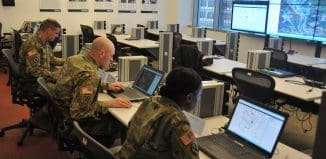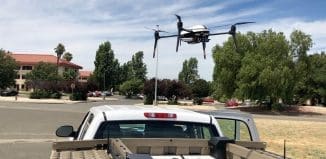Hi-tech cooperation: the answer to effective transport security
This post is also available in:  עברית (Hebrew)
עברית (Hebrew)
 The SECUR-ED project aims to establish new tools to achieve truly integrated security monitoring, thus ensuring the highest levels of passenger safety.
The SECUR-ED project aims to establish new tools to achieve truly integrated security monitoring, thus ensuring the highest levels of passenger safety.
Transport hubs such as train stations can be difficult places for security services to monitor. People are constantly on the move, departures and arrivals are happening all the time and spotting potential dangers or hazards can be like looking for a needle in a haystack.
What is more, the security systems in train stations tend to be self-contained; that is, they are not in communication with other transport hubs, or even sometimes with the security services. This can make coordinated action in an emergency all but impossible. A major EU-funded project entitled SECUR-ED – due for completion at the end of September 2014 – aims to change all this by establishing new tools to achieve truly integrated monitoring, thus ensuring the highest levels of passenger safety.
With 39 partners and a budget of EUR 40.2 million – the EU is providing EUR 25.5 million in funding – SECUR-ED is one of the largest and most ambitious demonstration projects in European security research. The project started off by identifying possible ways for security personnel across a city to share information during crisis situations. The data gathered in this initial phase then enabled the development of new innovative tools to make closer cooperation a reality. One such tool is a new multi-touch table that enables participants to select data and send it to partners in order to jointly assess any given situation.
The SECUR-ED project has also worked on improving inter-city collaboration, and run a series of demonstrations to assess feasibility and effectiveness in connecting railroad networks in Berlin, Madrid, Milan and Paris. One such test run involved, for example, an ‘unauthorised party’ slipping into a railroad storage depot in Milan, which staff at the control centre were able to detect with the aid of a heat-sensitive camera and a zoom-lens camera.
In a demonstration of potential cross-city cooperation, researchers in Madrid transmitted an image of a suspicious individual to the city’s buses. Cameras in the buses were then able to compare the faces of boarding passengers with that of the target individual. If the face was a match, the system dispatched an automatic message to the bus driver and the control centre. In Paris, a demonstration was organised to evaluate the effectiveness of new technology in the prevention of different attacks – explosive, toxic/chemical and radioactive – while the network and IT systems were assessed for their vulnerability against cyber attacks.
All in all, this project has the potential to significantly improve mass transportation security, through upgraded targeted surveillance technology and facilitating much greater cooperation between partners across Europe. Indeed, the success of the demonstrations has shown that cross-border collaboration can be an effective means of achieving results. Furthermore this is only the beginning; a group of medium size cities will now take up the research in order to assess their own risks, and design their own solutions through adapted demonstrations.
The closing conference of SECUR-ED is scheduled to take place on 17 September in Brussels. In addition, the project will be presented at Future Security 2014, the security research conference in Berlin, from 16 to 18 September.





























